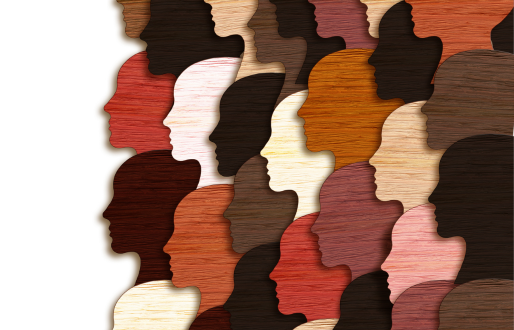But during this week of honouring diversity and bringing together all Australians from different backgrounds - while very much worth celebrating - it’s important to remember it began with the International Day for the Elimination of Racial Discrimination.
The United Nations in 1979 declared the International Day for the Elimination of Racial Discrimination would be marked on March 21, the day police in Sharpeville, South Africa, opened fire and killed 69 people at a peaceful demonstration against apartheid ‘pass laws’ in 1960.
It was in 1999 the Australian Government declared March 21 as Harmony Day, and some fear the focus of the original day of action is becoming lost.
Here, we ask four UNE people - Sue Watt, Brittany Abraham, Mirela Suciu and Errol Clarke - to share their thoughts on racism in the workplace, in educational settings and in the community; its impacts; and meaningful actions to work towards eliminating it.
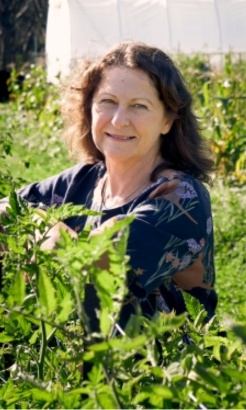
Image: Sue Watt
Associate Professor Sue Watt, from the UNE School of Psychology, conducts research into prejudice, immigration and refugees, focusing on the psychological underpinnings of prejudice. Her most recent research investigates the flip side of prejudice – the liking and welcoming of other groups; Australians’ positive attitudes to immigrants, including refugees; and how this might translate into a warm welcome.
Sue, what are some of the impacts of racial discrimination on marginalised people such as refugees?
When we think of ethnic discrimination (I prefer this to the term “racial discrimination”), we tend to think of the big things, such as missing out on a job or a house because of one’s ethnic background, or not getting the same opportunities within educational settings.
These events have large concrete impacts on people that can lead to poorer living conditions – social marginalisation and labour market marginalisation.
They also create stress in the recipient, resulting in emotional outcomes such as psychological distress, poorer mental health, lower academic performance, and higher levels of depression. It can make people angry and resentful, or make them want to withdraw.
Prejudice and discrimination can also be expressed in small ways. The less-friendly smile, the lack of interest in one’s ethnic background, missing out on invitations to join work colleagues for coffee, or micro-aggressions such as a hostile response to a small comment.
These slights can have a cumulative impact, with similar outcomes to those I described above. Some people defend themselves from these emotional outcomes by not attributing the problem to discrimination (they might decide they weren’t the most competitive job applicant, or that they didn’t want to go to coffee with their colleagues) or by saying things to themselves such as “They’re just prejudiced”.
How does ethnic discrimination harm whole communities?
We’re all interdependent, aren’t we? If one part of society is hurting, we all hurt.
For example, if one part of society experiences extreme disadvantage, there are the flow-on effects of stress which might produce domestic violence, drug and alcohol abuse, crime. This affects society more generally as we deal with the outcomes of these social ills.
On the other hand, multiculturalism has a huge amount to offer us. We all know what happens when people live within an echo-chamber … we need to hear different points of view. Cultural diversity produces diverse views, skills, and approaches, making us stronger and better able to deal with different challenges.
What can individuals do to combat ethnic discrimination?
I think we have all had the experience of hearing someone espouse a view or express a prejudice that we disagree with. Yet, we tend to remain silent. This silence is a part of the problem.
We should not tolerate seeing or hearing prejudice or discrimination – we need to take it up with the person expressing it, and defend or be an ally to the person on the receiving end. We should also reassure that person that yes, it really did happen and they are not just being over-sensitive.
Sometimes, we recognise prejudice in ourselves. This arises by being part of a society that perpetuates certain viewpoints. A well-meaning person can keep it under control much of the time, but we need to be aware that it can leak out in moments of stress or time pressure - this is when we need to be most on guard.
Ethnic discrimination also occurs at an institutional level. People working in universities need to be aware of factors that might operate against marginalised groups and to try to correct them. One simple thing from the teaching end is to ensure there are transcripts of recorded lectures, in case people from a migrant background have trouble keeping up with the spoken word, especially if there is a strong Aussie accent!
Finally, one of the best ways to reduce prejudice and discrimination is to have real, meaningful contact with people from diverse backgrounds where we get to know and understand their perspective.
For people on the receiving end of discrimination, discrimination is illegal and there are many avenues to lodge a complaint. You should do this, otherwise nothing will change.
At the more personal level, experiencing prejudice and discrimination is a stress. To counteract this, focus on your core values, beliefs, and strengths, talk with family and friends (or supportive groups and organisations). Talking through incidents that have harmed or upset you will help you to understand and process what happened. You might try to work out how to respond if this happens again. Then, try to leave it behind you without dwelling on it. And if you really can’t let it go, seek professional help.
What can communities do?
They can do a lot! There are many factors involved in ensuring opportunities for multicultural community members, including adequate housing and work opportunities. Events such as Harmony Day are wonderful for people of different backgrounds to come into contact with each other under favourable circumstances. Last week, there was an event in Armidale called “Fun and Friendship” where there was a sausage sizzle and some games. This sort of thing allows friendships to grow, bringing understanding and liking of one another. Positive stories in the local press also make a difference, such as stories about our recent Australia Day citizenship ceremonies as they promote understanding of individual journeys and outcomes.
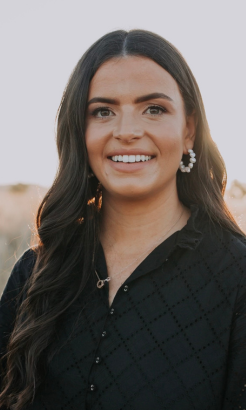
Image: Britt Abraham.
Brittany Abraham is an Indigenous Knowledges lecturer in the UNE Faculty of Medicine and Health, working with colleagues across the university to further embed these knowledges in university courses as well as support Indigenous students.
Britt, what can be some of the impacts of racial discrimination in education?
Racial discrimination has a significant impact within the education space which unfortunately has contributed to lower outcomes and completion rates among Aboriginal and Torres Strait Islander people. Unfortunately, when racial discrimination occurs Aboriginal and Torres Strait Islander students do not feel safe within the learning environment, resulting in disengagement and ultimately withdrawal from their studies. This in turn has a flow-on effect for their family and community, and further widens the gap between education outcomes between Aboriginal and Torres Strait Islander people and non-Indigenous Australians.
Implementing Indigenous Australian perspectives in the education space allows Aboriginal and Torres Strait Islander students to see themselves and their knowledge systems in what they are learning. Additionally, it also allows non-Indigenous students to learn how to effectively work alongside Indigenous Australians as an opportunity to develop respect and knowledge regarding Aboriginal and Torres Strait Islander culture and people.
How does racial discrimination harm whole communities?
Family, kinship, and communities play a significant role in the lives of Aboriginal and Torres Strait Islander people and due to the collectivist nature of our communities; when one person is harmed, the entire community is harmed. As a result, racial discrimination has a ripple effect throughout the entire community as the pain, hurt and suffering of our loved ones and community members is passed on.
What can individuals do to combat racial discrimination in education?
Educate yourself on Aboriginal and Torres Strait Islander people, communities, and culture. For those working in the education setting, ensure that you are embedding and preferencing Indigenous Knowledges into your curriculum, and collaborate with and work alongside Aboriginal and Torres Strait Islander people to share in the teaching of the content. It is extremely important to have Aboriginal and Torres Strait Islander voices and perspectives within education and curriculum. Furthermore, ensure you are providing culturally safe learning environments so that both Aboriginal and Torres Strait Islander students and non-Indigenous students have the potential and opportunity to thrive, grow and flourish.
What can communities do?
Stand up and be an ally when you see racial discrimination occurring. Don’t be afraid to call it out and offer your support to the victim. Acknowledge, respect, and celebrate the similarities and differences of everyone within the community and be open to accepting that there is more than one way of knowing, doing and being.
Racial discrimination has the potential to impact an individual’s identity in a negative way and experiences of racism stay with that person forever, it never leaves you. Next time you go to discriminate against someone, I challenge you to ask yourself how it would make you feel and reflect on what impact it would have on your life and your identity. It is important to remember that no matter our race, we are all human. And so, we should focus on acknowledging and respecting each other’s differences to celebrate what we each uniquely bring to society.
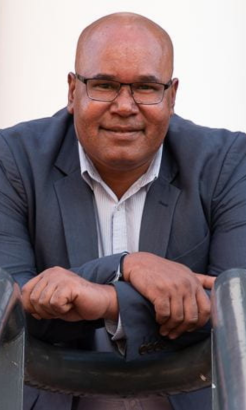
Image: Errol Clarke
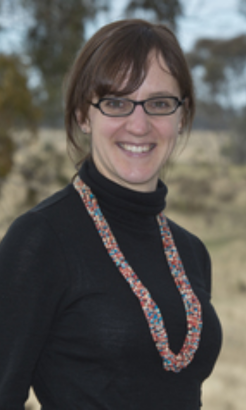
Image: Mirela Suciu
Mirela Suciu is a UNE Equity, Diversity and Inclusion Consultant, working to develop and implement strategies, training, and initiatives to increase equity, diversity and inclusion within the university. Errol Clarke is UNE’s Aboriginal Employment Consultant, who works to boost Aboriginal and Torres Strait Islander employment at UNE, engagement with local Aboriginal communities, and cultural awareness among UNE staff.
Mirela and Errol, what are some of the impacts of racial discrimination on people in the workplace?
Racism has immediate and long-term effects on individuals, and also organisations and societies more broadly.
Racial discrimination in recruitment processes and the housing market has been shown to significantly impact people’s socio-economic status. A couple of studies in Australia demonstrated that job applicants with Anglo-Saxon names had an over 50 percent higher change of being invited to job interviews than people with non-Anglo-Saxon names.
It can be subtle or casual racism in everyday interactions. For example, “There are two men of colour at my workplace, and I’m routinely called the other’s name even though we look nothing alike and we’ve both worked there for more than four years.”
It can be systemic racism, which is organisations’ policies, procedures and practices that directly or indirectly discriminate, exclude or disadvantage people from racially marginalised groups. For example, hiring and promotion practices in most industries favour people from Anglo-Saxon backgrounds and diminish the experiences, perspectives and strengths of people from other backgrounds. This leads to a visible lack of cultural diversity in leadership positions.
It can be racial tokenism, when a racially marginalised person is included in an organisation to create the impression of racial equity and avoid accusations of racism. For example, they are hired or used to visibly promote the organisation.
And it can be racial profling, where a person is suspected of having committed an offence or crime, purely based on their ethnicity, religion or nationality, rather than on individual suspicion or available evidence. In the work context, this could include not trusting some people with the same responsibilities as their peers, or being overly suspicious when they take time off or are late.
How does racial discrimination harm whole workplaces?
Racism has real and long-lasting effects on people’s health, wellbeing, career ambitions and engagement at work. Racially marginalised women have reported that they have reduced their ambitions and hours worked, due to the impact racism had on their lives.
Seventy percent of employees exposed to racial discrimination, violence or harassment take time off work.
Sixty percent of consumers indicated they will buy or boycott a brand, depending on how that brand response to racial injustice. Particularly, younger people are more responsive to an organisation’s staff profile.
On the other hand, racially diverse teams are linked to greater creativity, productivity and innovation, by reducing conformity and unilateral thinking and by increasing the ability to communicate across cultural contexts.
What can individuals in the workplace do to combat racial discrimination?
The most important part in combatting racism is to educate yourself, be aware of your own privileges, genuinely listen to others’ experiences and call out racism for what it is.
Don’t expect others experiencing racism to educate you, as this may cause them to relive trauma and they may not feel safe sharing their experiences openly in the workplace. Utilise the many resources available that explain the impact of racism on people who are non-white. For example, you can learn about the impact of the stolen generations by watching Healing Foundation videos and this resource by All Together Now: Racism in Australia.
Many people are uncomfortable with confronting racism and some people may not even notice it as such, as especially subtle racist behaviours may be perceived as the norm.
What stops people from calling out racism is a real fear of being targeted by the perpetrator, a desire to avoid conflict or manage interpersonal relations, perception that action would not make a change, or not wanting to be seen as being politically correct. However, if it feels wrong, it most likely is.
If it is safe to do so, you can:
- Confront or disagree with the perpetrator
- Call it for what it is - ‘racism’ or ‘discrimination’
- Interrupt or distract the perpetrator
- Comfort the person targeted and make sure they are safe and feel supported
- Express upset feelings
- Seek assistance from a friend, colleague, lecturer, manager etc
- Report the incident to your organisation’s WHS team or HR. They will be able to discuss with you the possible avenues for action. Reporting all incidents also helps the workplace to better understand the prevalence and type of racism experienced by staff.
The Australian Human Rights Commission’s Racism. It Stops with Me. Campaign has some excellent resources for individuals to respond to racism: Bystander action | Racism. It Stops With Me (humanrights.gov.au).
What can organisations do?
To make meaningful change, organisations should first and foremost create awareness and an understanding that racism is real and active in our workplaces, and that it’s everyone’s responsibility to stamp it out. By building racial literacy, we stop denying racism and create the space for people to call out racist acts in a safe and supportive environment. Creating a safe and inclusive culture enables people with lived experiences of racism to share their experiences and know they are heard and that ideas to eliminate racism are being seriously considered rather than ignored.
A safe and inclusive workplace will create the capacity, and encourage more people, to report acts of racism that they have in the past felt unsafe to raise. This creates a better understanding (and data) of the factors driving racism at each organisation.
Increasing awareness and building in tools in recruitment and academic promotion processes for staff to identify their personal unconscious biases may reduce the instances of staff hiring people, who are similar to them, which reinforces racism.
At UNE, we have developed Unconscious Bias Training, a short micro-credential module that challenges us all to acknowledge and address our unconscious bias towards people who are similar to us. The module includes some inspiring resources to increase our awareness of the ingrained perceptions we all have of others.
We are also working on resources and training to raise awareness of the impact of racism and to reduce institutional practices that have been shown to exclude people from non-Anglo-Saxon backgrounds.

